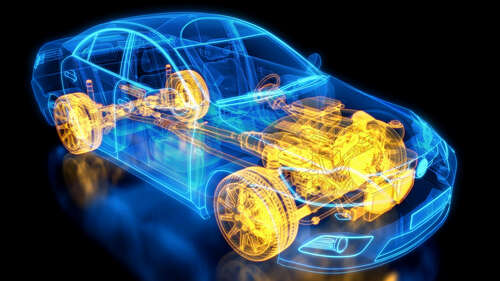
In 2005, Bugatti rolled out the Veyron with a W-16 engine that truly shifted the gears in car engineering. This new engine combined four turbochargers with 1,500 horsepower to push cars faster than we ever thought possible, blending cutting-edge materials and engineering at the very top of what cars could achieve.
The Bugatti W-16 engine design was significant for being the most powerful in a production car at the time, producing 1,001 metric horsepower (987 American horsepower) and becoming the first road car to exceed 1,000 horsepower. Volkswagen, Bugatti’s parent company, developed the W-16 by combining two V8 engines, using shared cylinder heads and a crankshaft.
The idea for the W-16 engine came from an unlikely place: a bullet train ride in Japan, which caught the imagination of Volkswagen’s chairman, Ferdinand Piech, a longtime fan of 16-cylinder engines. To manage its massive power, the 8.0-liter engine with its four turbochargers needed an intricate cooling system with 10 radiators.
Bugatti announced in 2022 that the era of the W-16 engine was coming to an end, turning its focus to hybrids and electric engines. The W-16 engine, compact enough to fit in the same space as a V12 but lighter than a traditional V16, came from a 1997 idea by Piech.
The W-16 engine powered some of the fastest cars in the world, like the Veyron and Chiron, becoming a symbol of extreme automotive achievement with horsepower figures you’d more likely see on an aircraft than a street-legal car.

